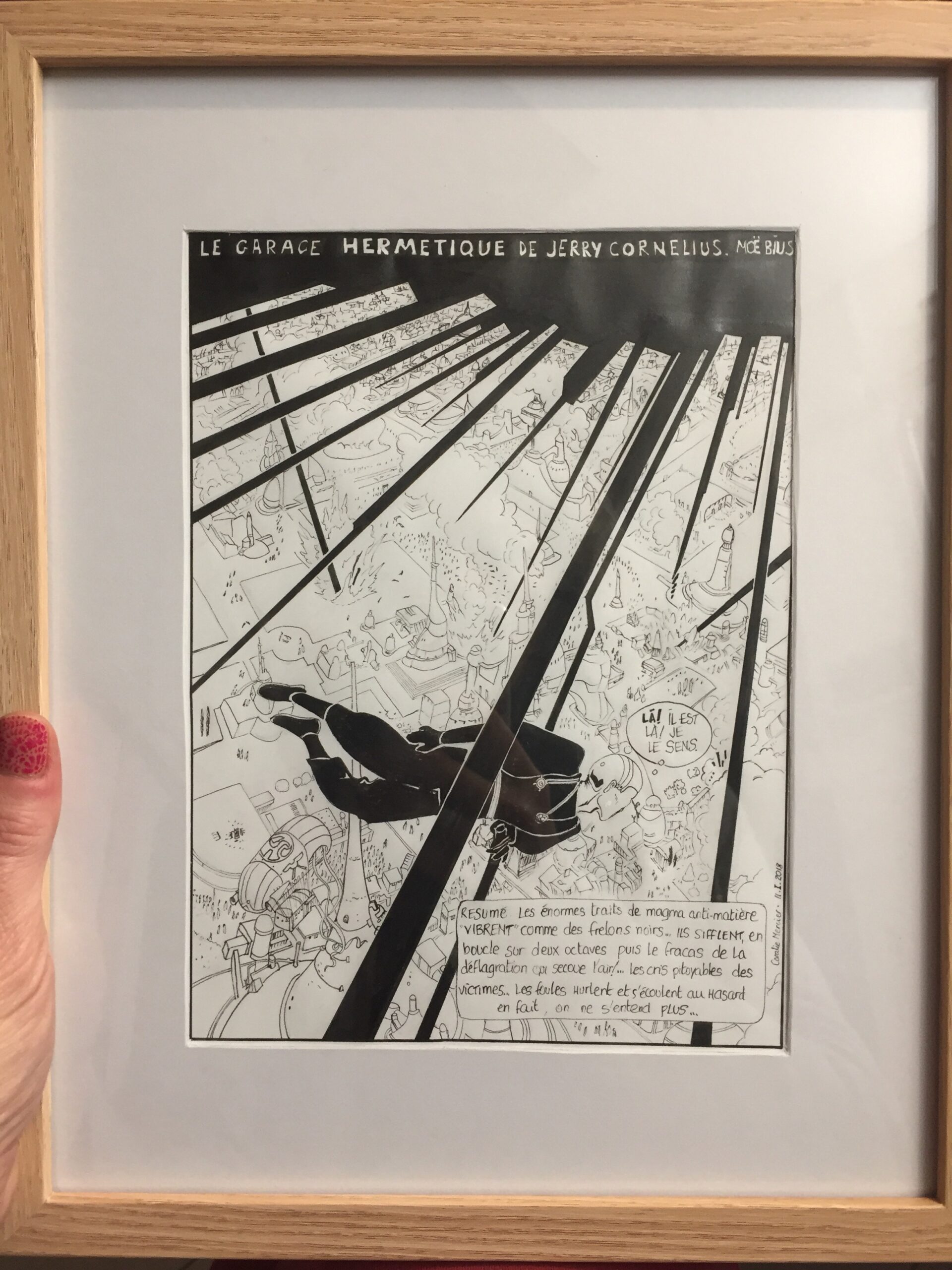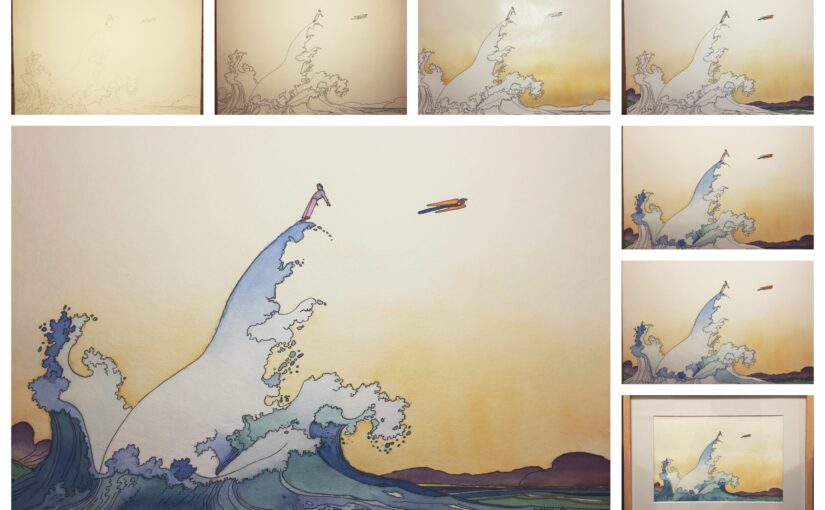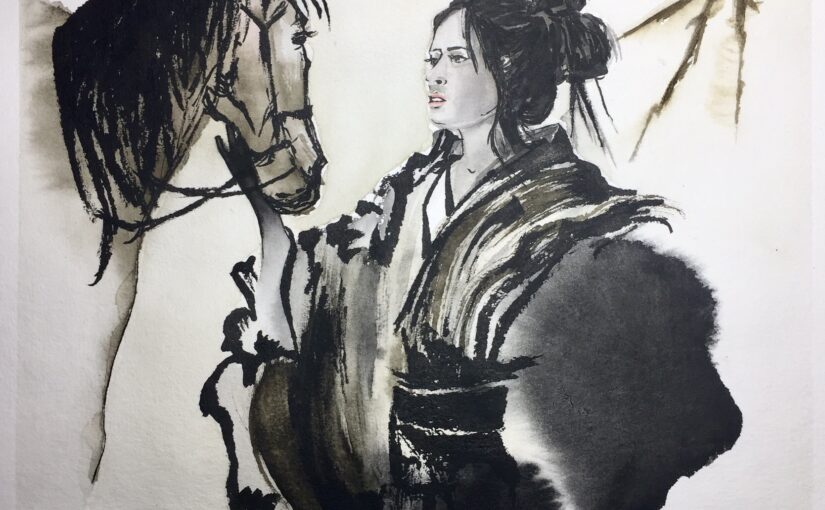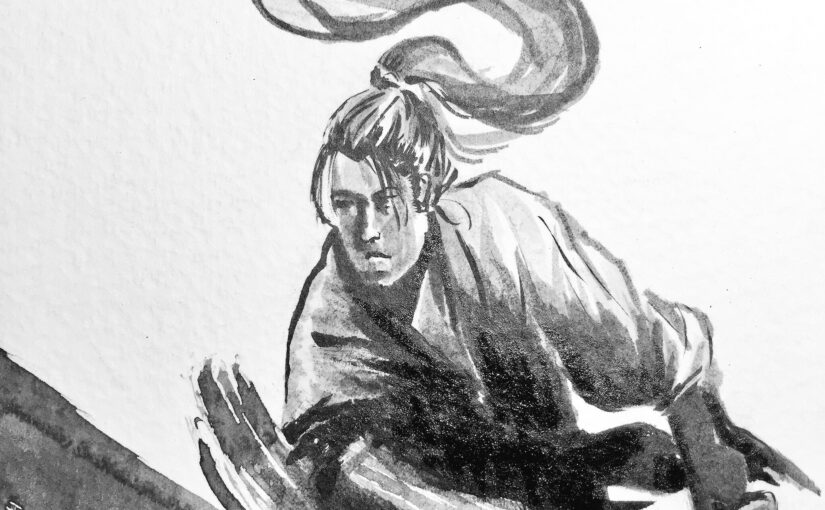Moebius was commissioned by Hermès in 2011 to create nine illustrations for a campaign called Voyage d’Hermès. This is one of those and like the eight others, no Hermès product appeared: 
I sketched it on my 30×30 cm watercolor pad:
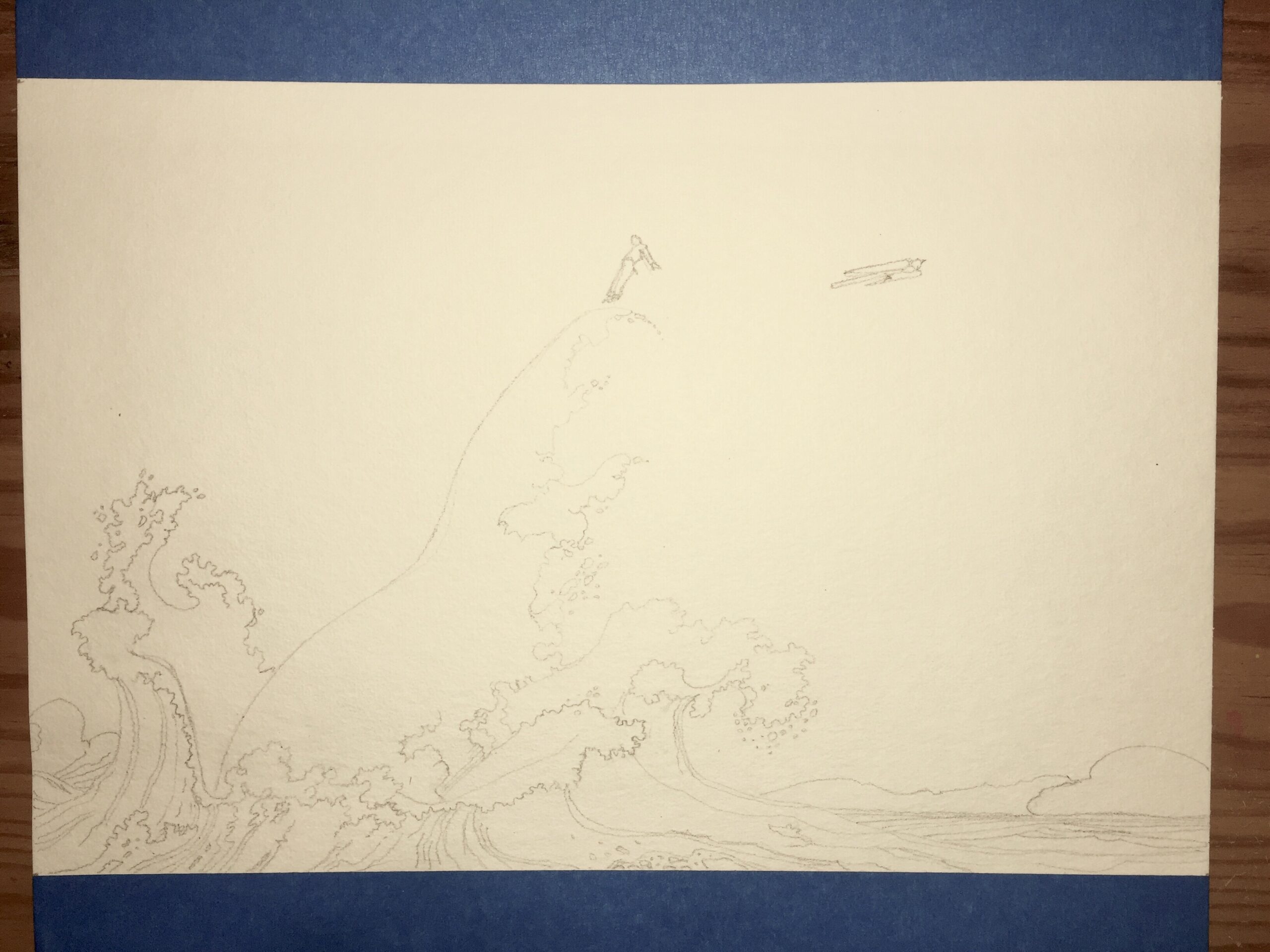
For the outline I used a 0.05 mm Uni-ball Pin pen:
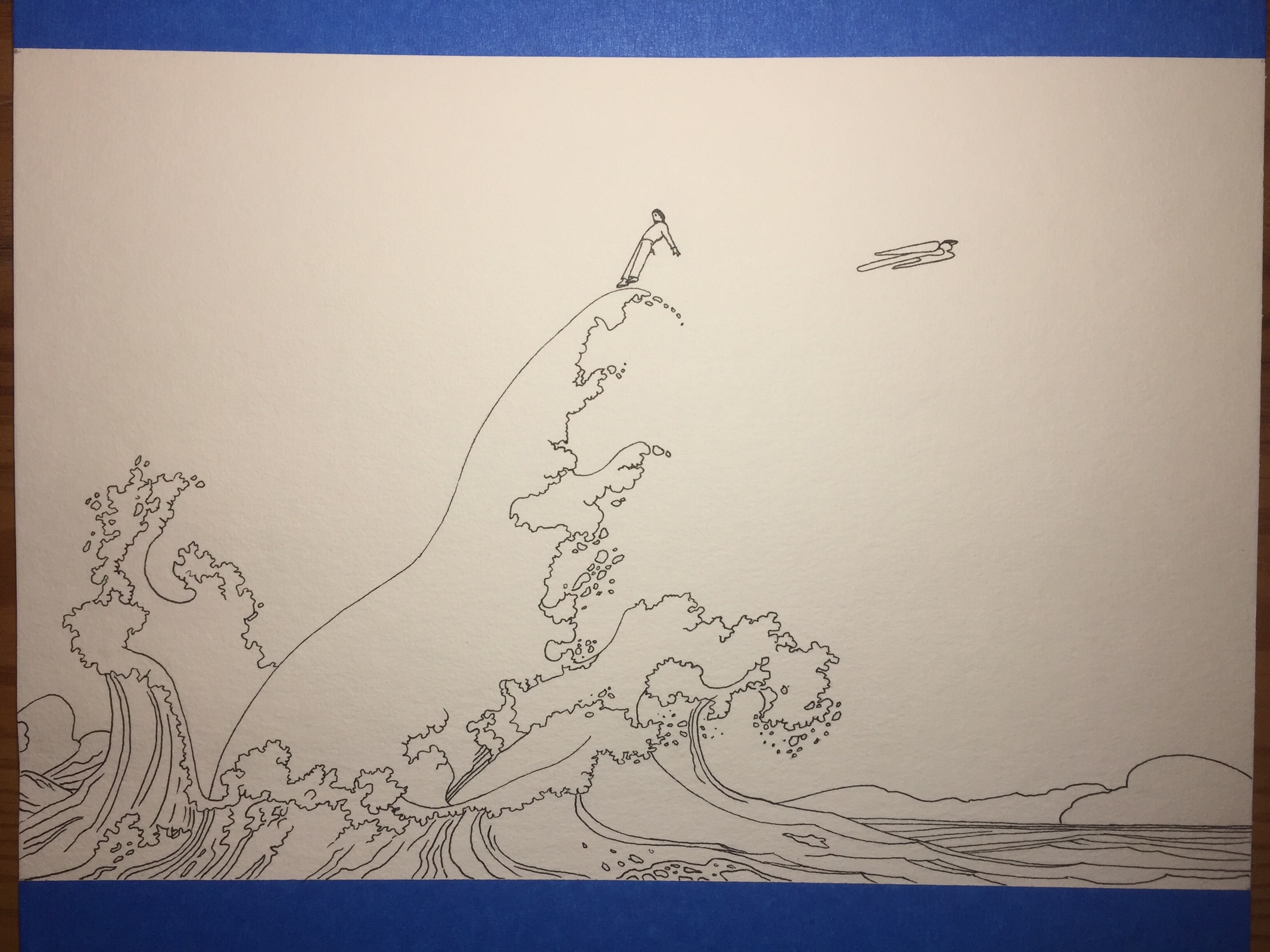
Then I washed the paper and applied some yellow and a bit of orange:
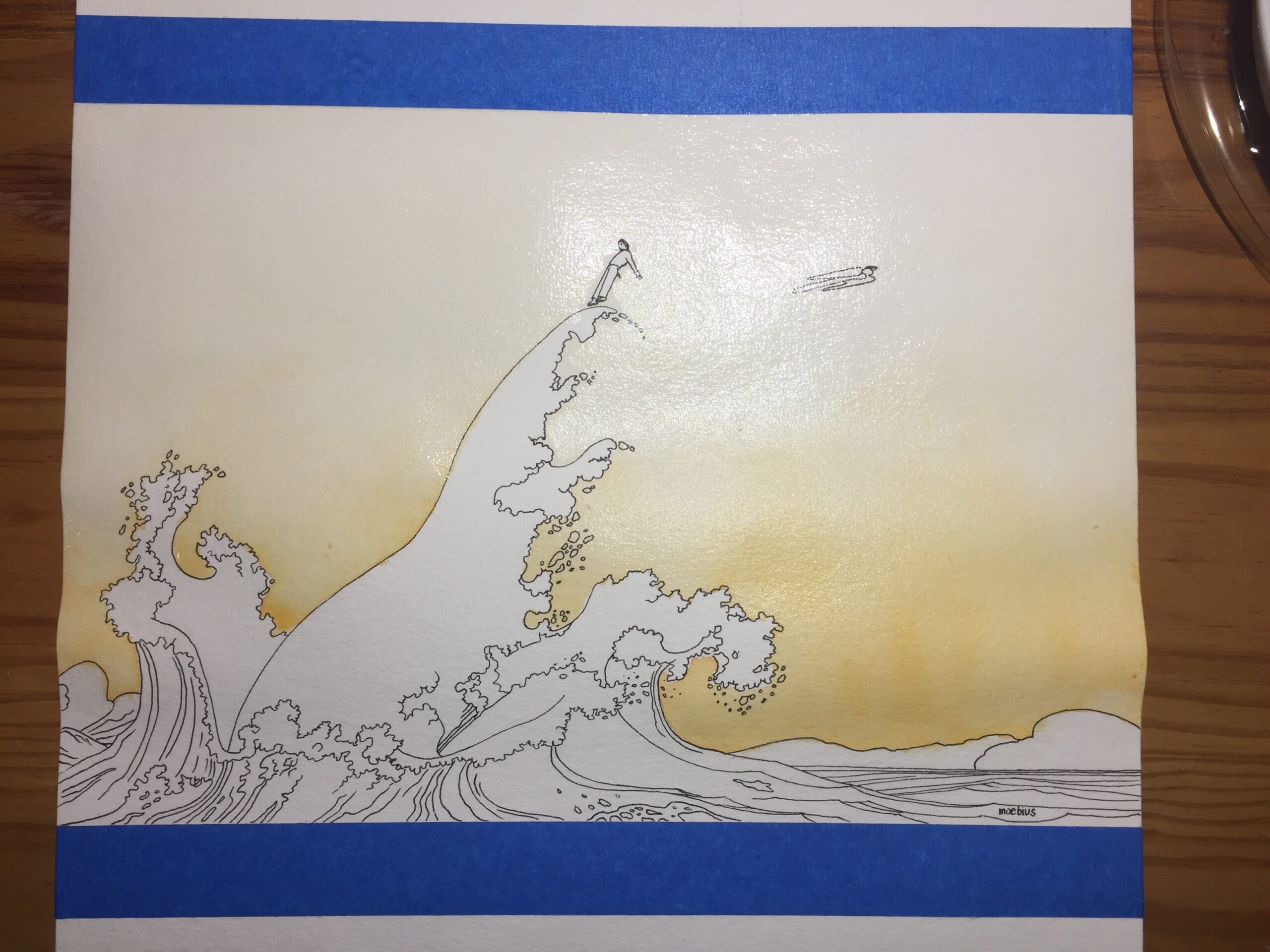
I continued painting the figure and the bird, the skyline, and started with greens and blues for the wave:
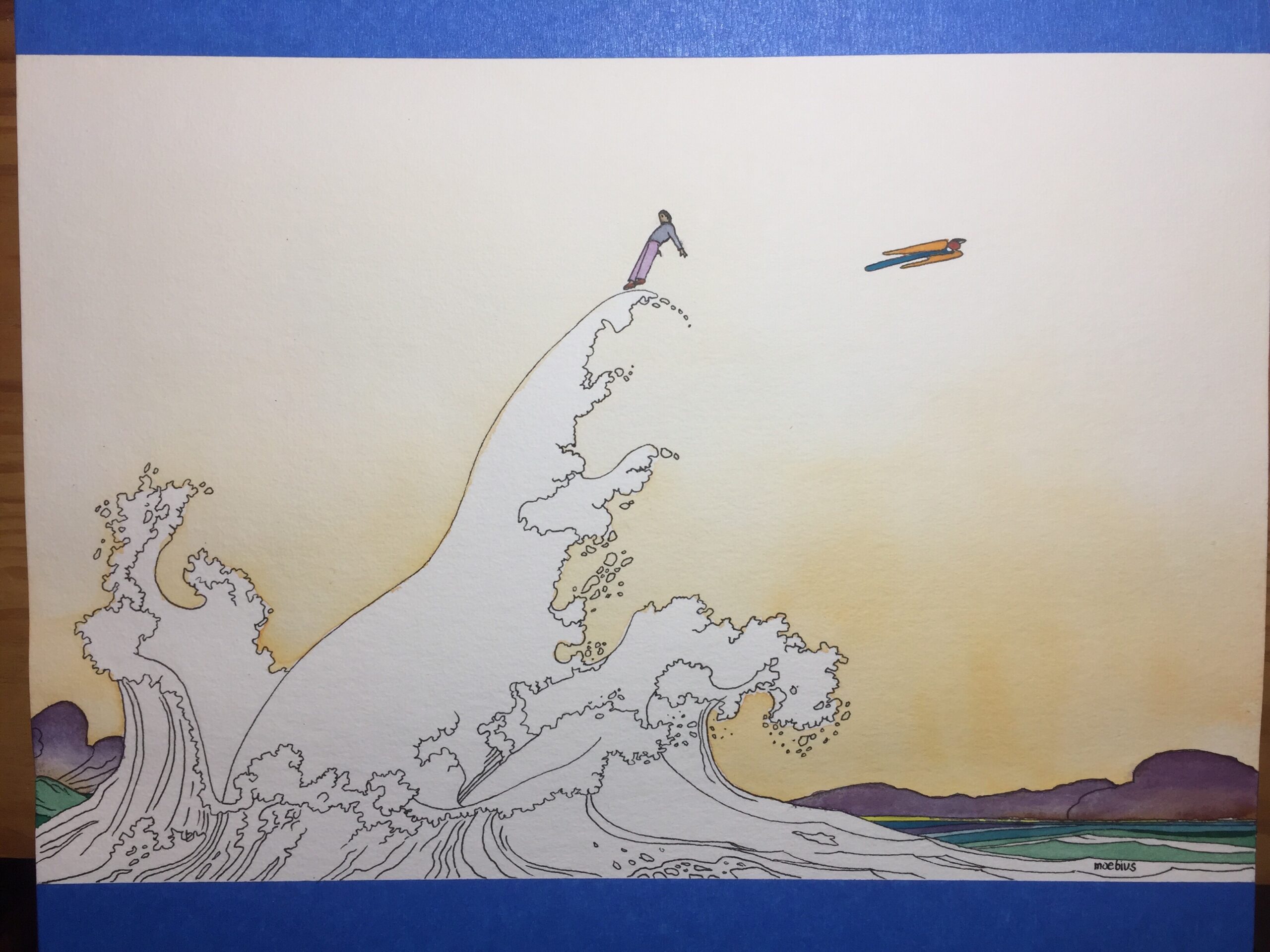

Final version, 30×20 cm:
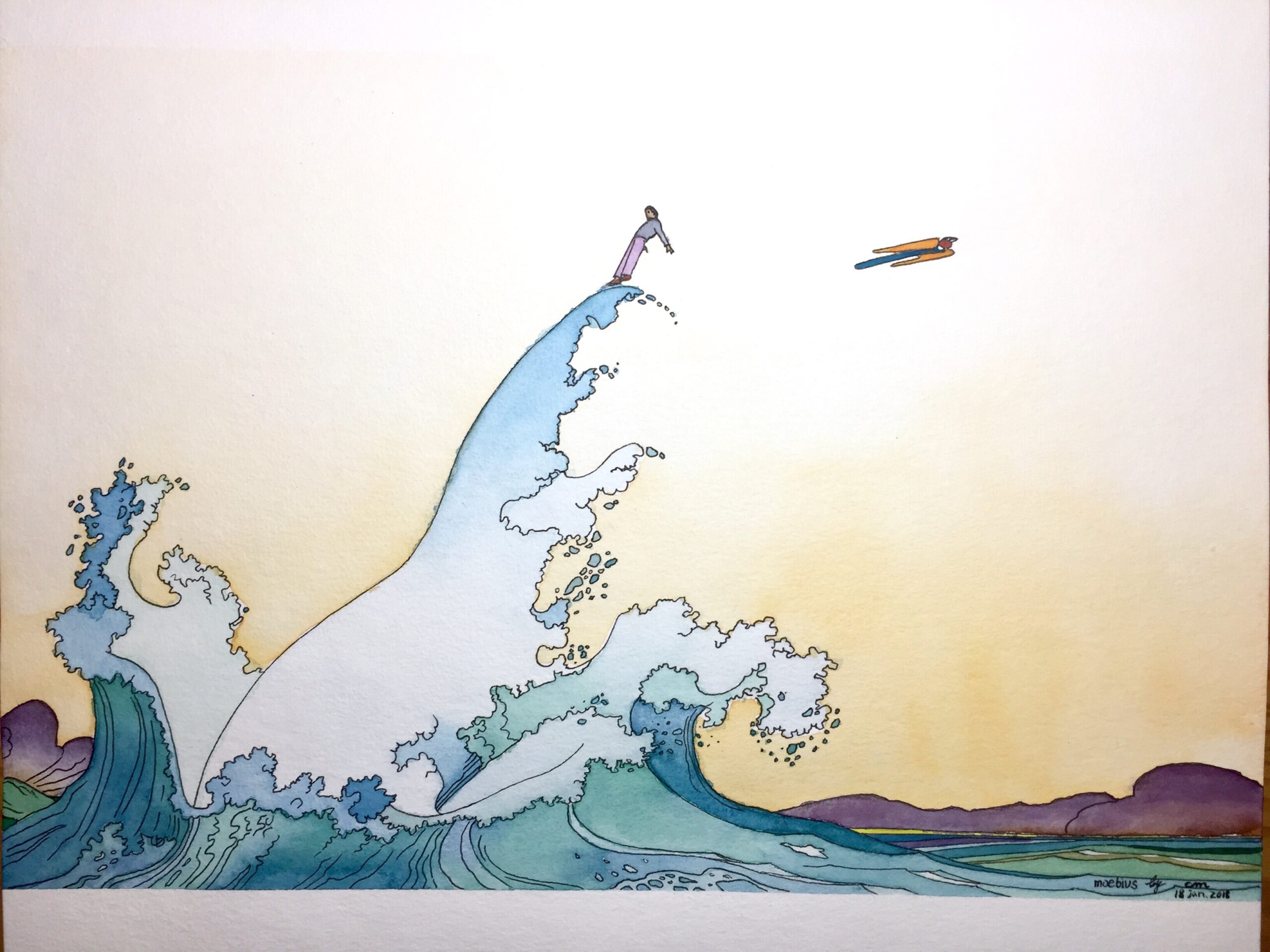
Gift ready and framed!
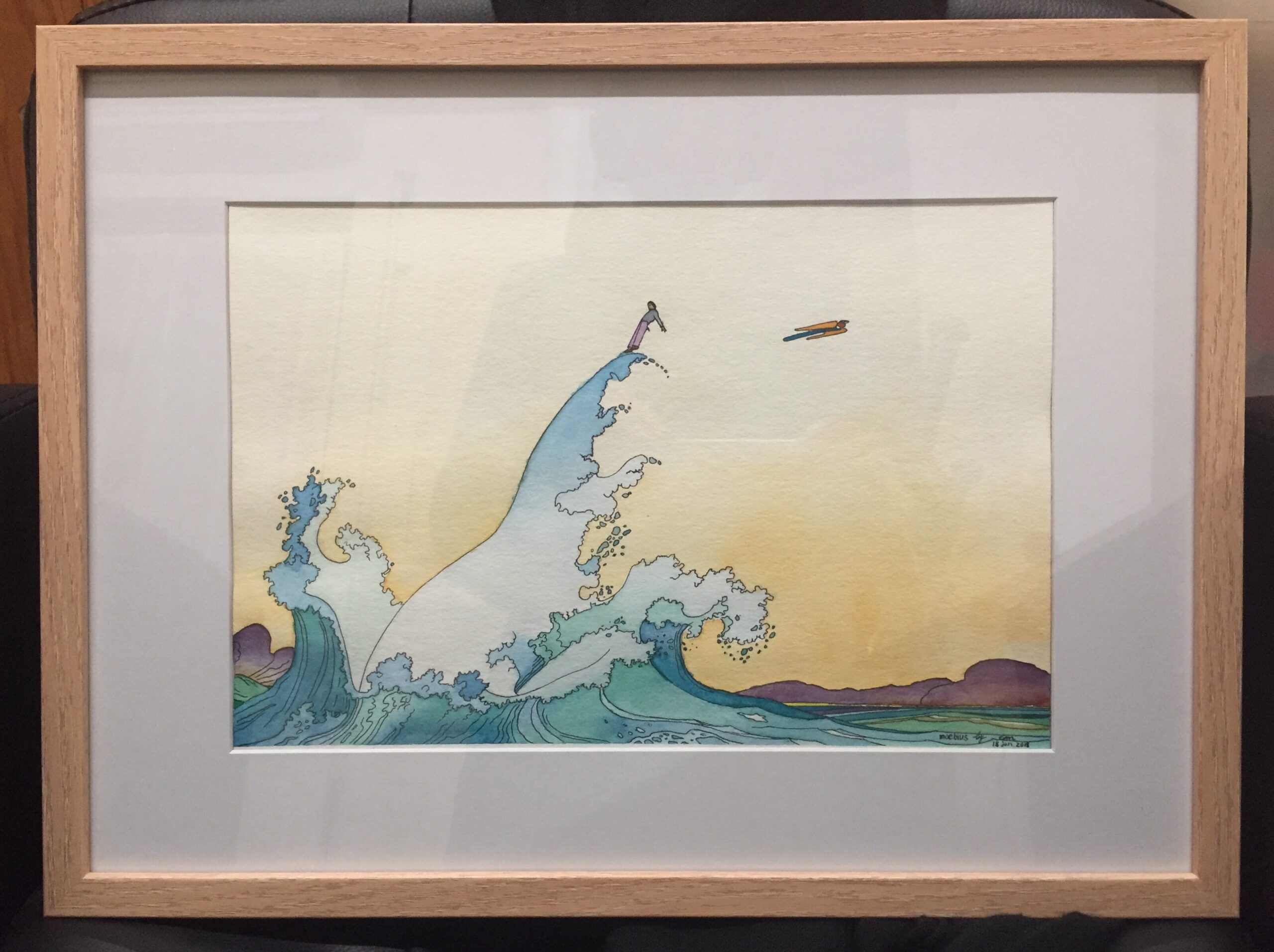
A couple days later, I tried a digital version of it which I finished on the same day, using Procreate on iPad Pro, 1878×1440 px:
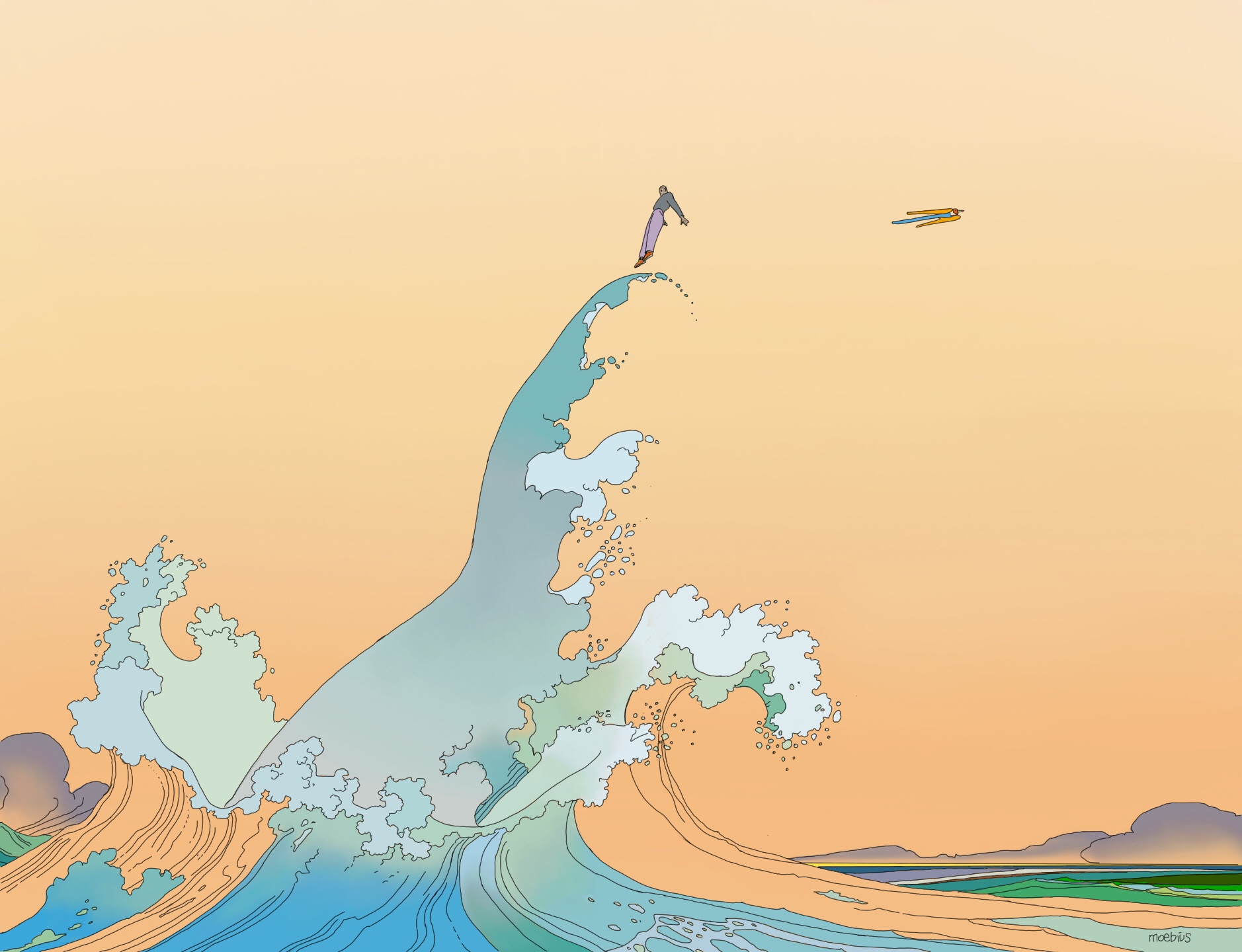
Final result:

Author: koalie
Horse and young woman in kimono under Sakura
I found horse and young woman in kimono under Sakura, another beautiful work by Taiwanese artist Jung Shan:
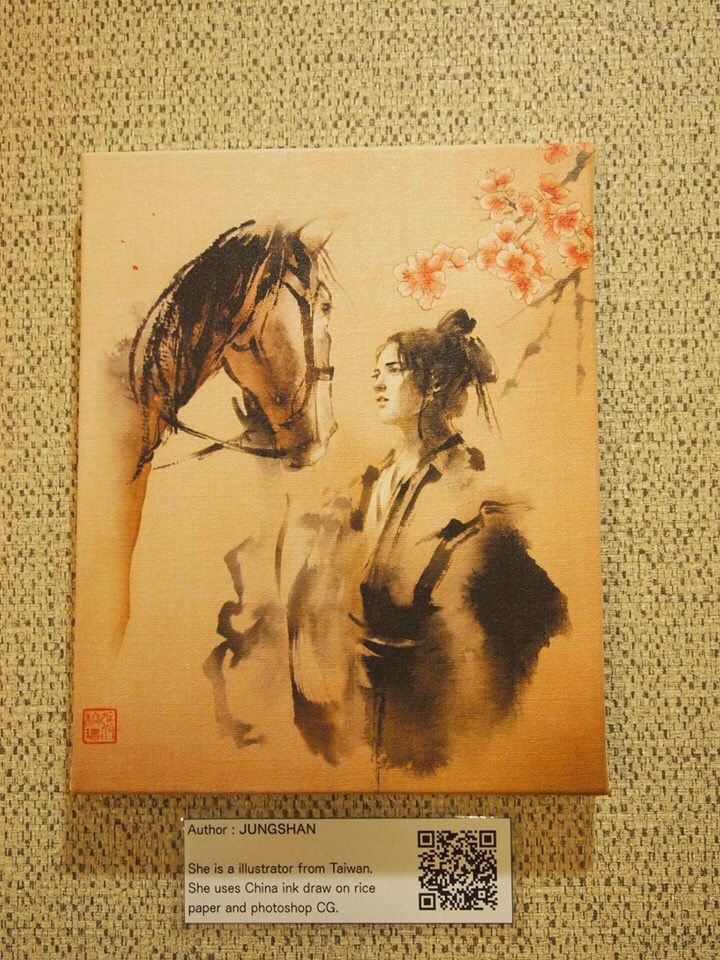
Although I have some rice paper, I am far from comfortable with it, and the ratio and size wasn’t what I wanted, so I sketched on my 30×30 cm watercolor pad:
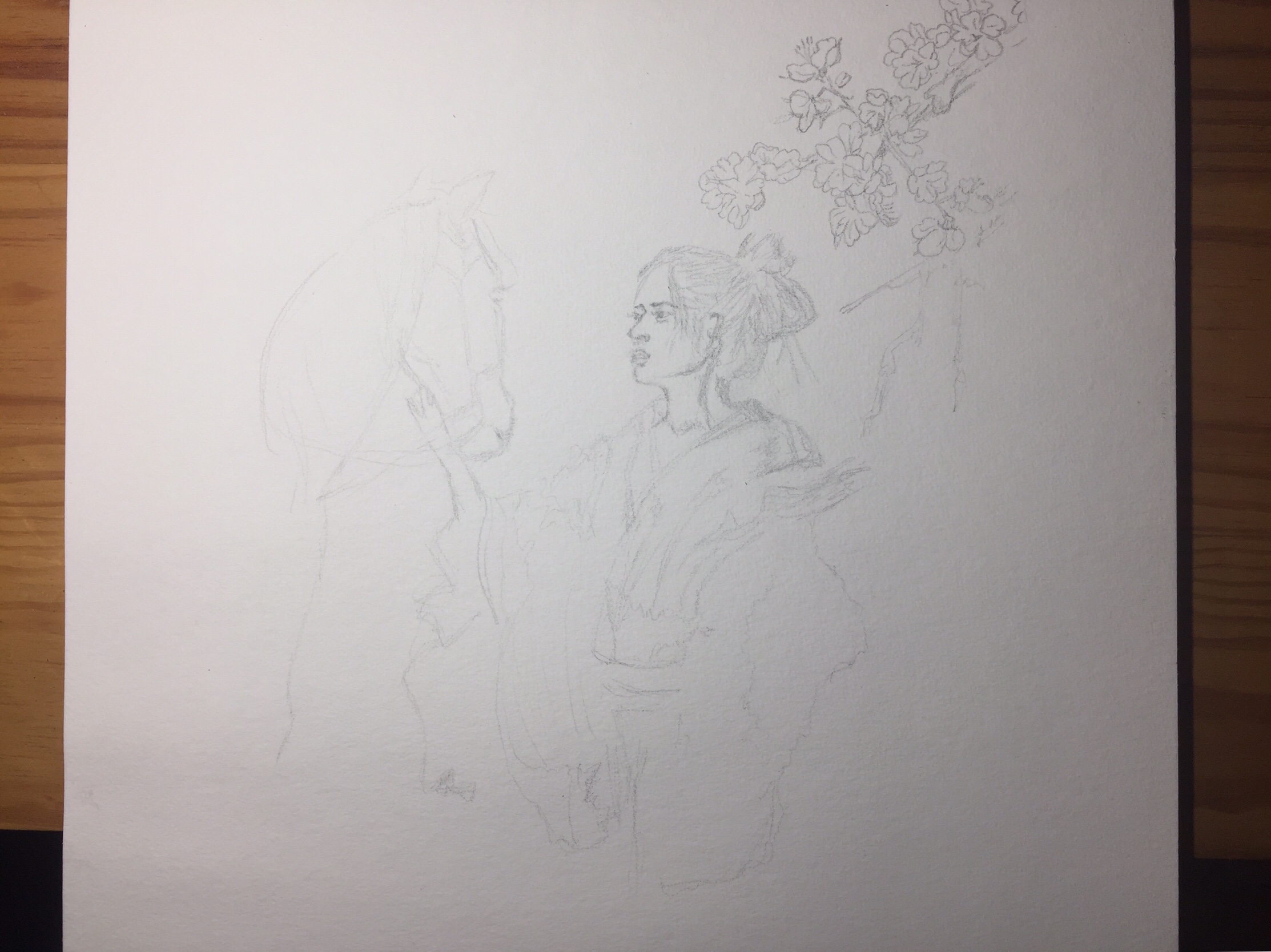
I used a Pentel black ink brushpen for the outline and strong parts, and was happy with how her faced turned out, compared to the pencil sketch:
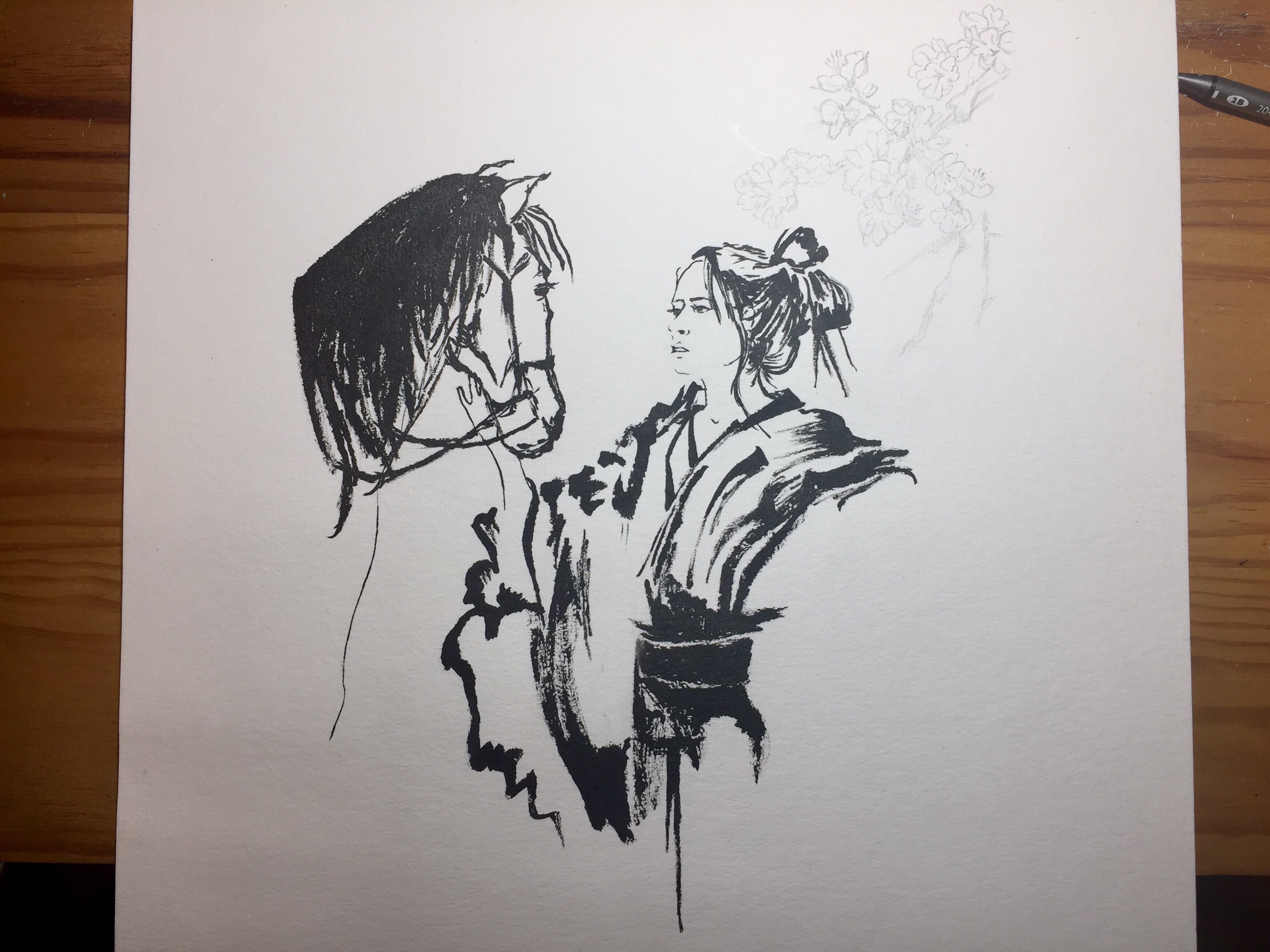
I used sepia watercolor and a fine brush for the tree branch and blossoms:
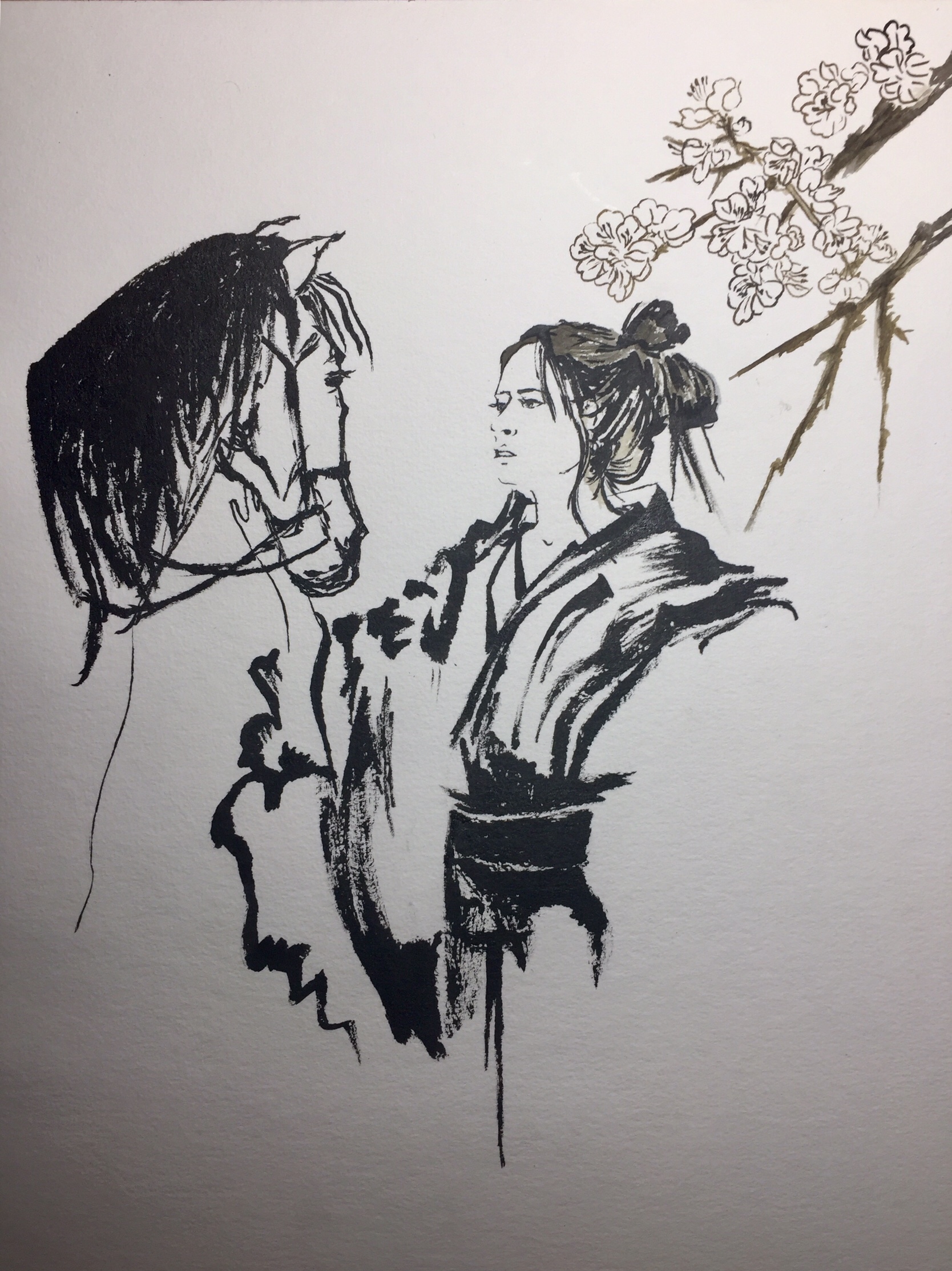
With more sepia, some lamp black watercolor, and a regular brush, I painted the horse and the woman’s skin:
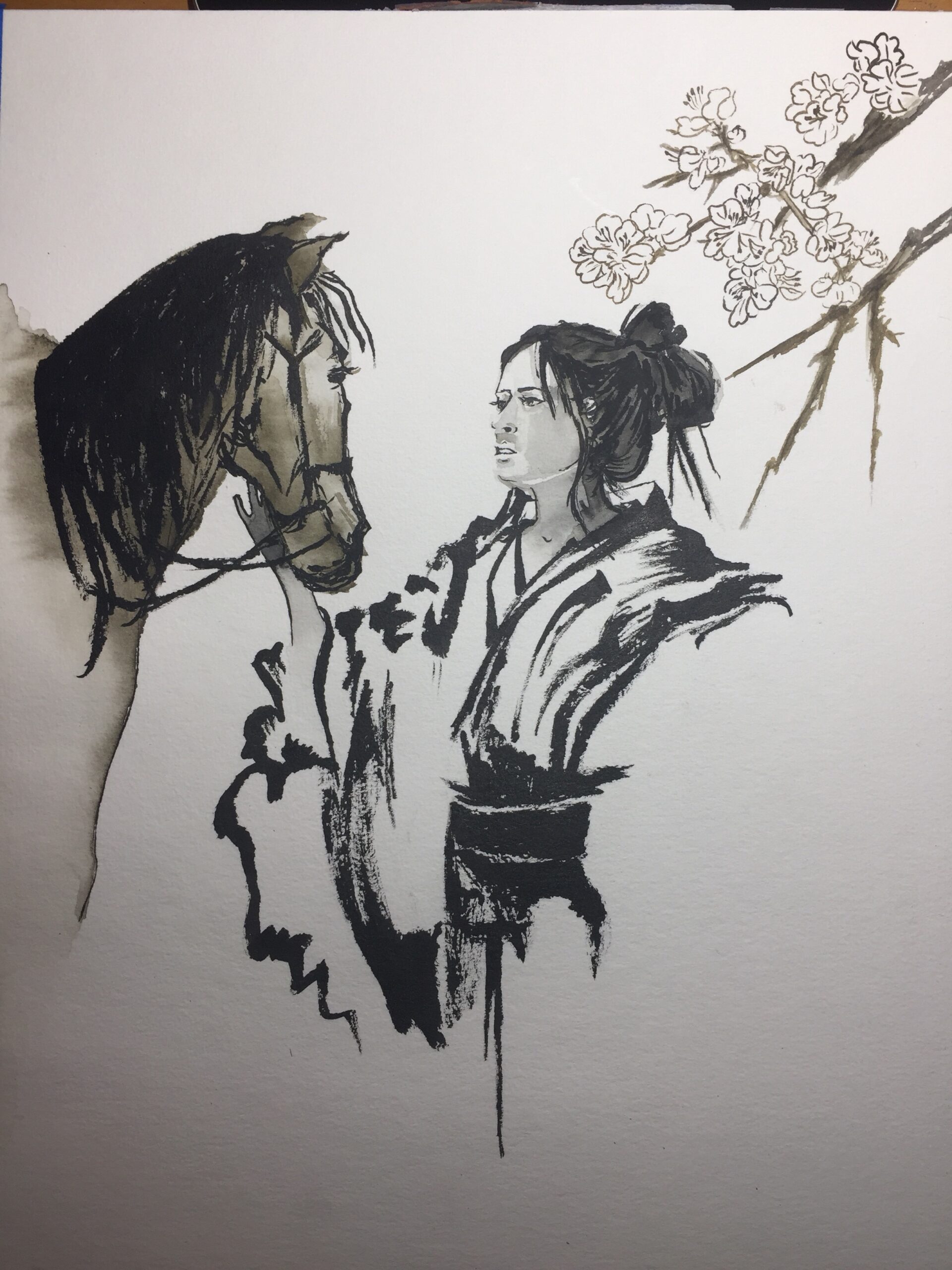
And finally, I used quinacridone rose to paint the blossoms and the woman’s lips, and used what I had left from my sepia wash for the kimono, and the background. The rest of the kimono was painted with lamp black watercolor:

Here is the final version (23×30 cm), framed:
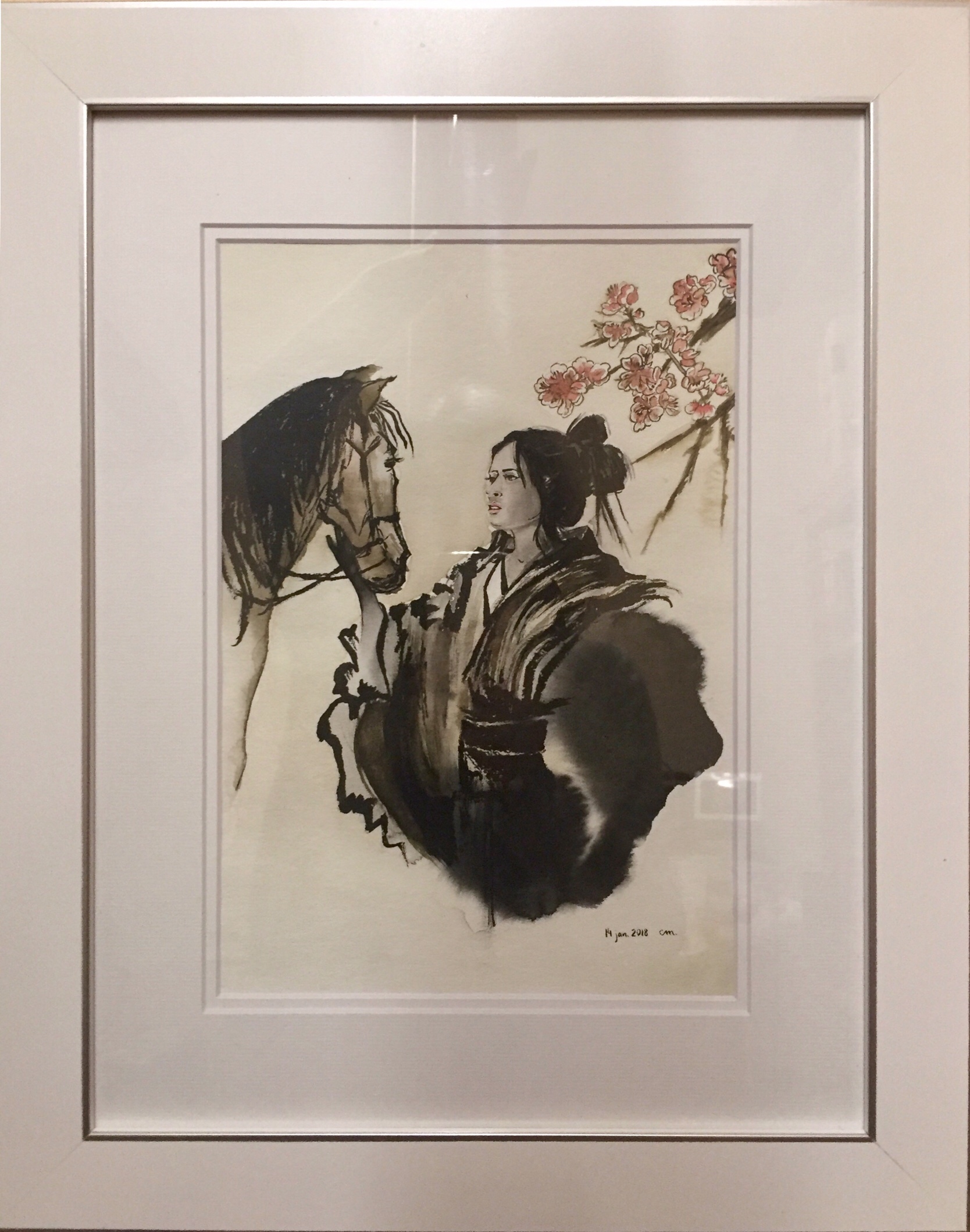
Samurai
This is ‘Speed III‘ by Jung Shan, who, as far as I understand, draws digitally and then adds actual ink brush strokes :
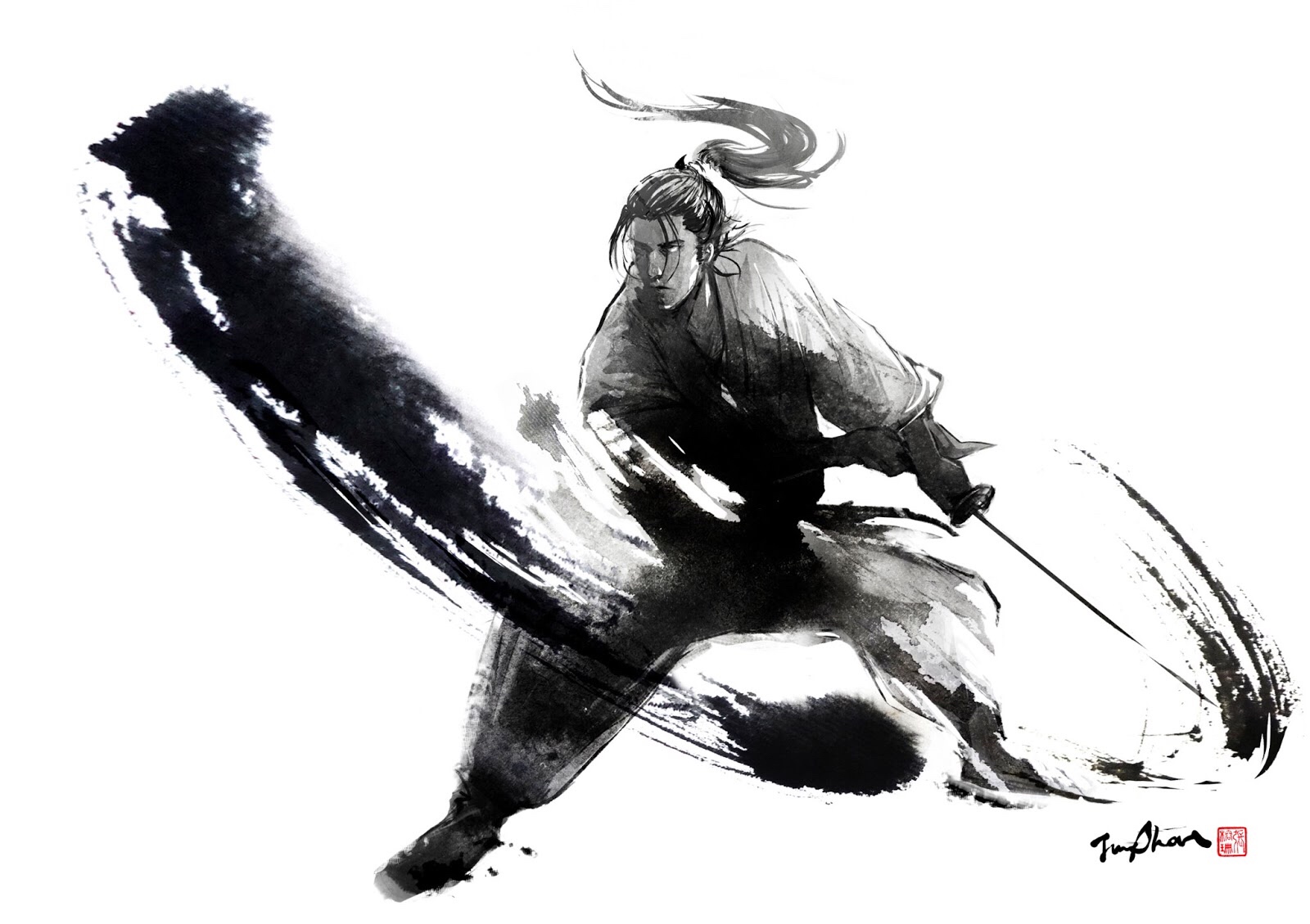
I sketched the samurai on a Moleskin watercolor book (21×13 cm):
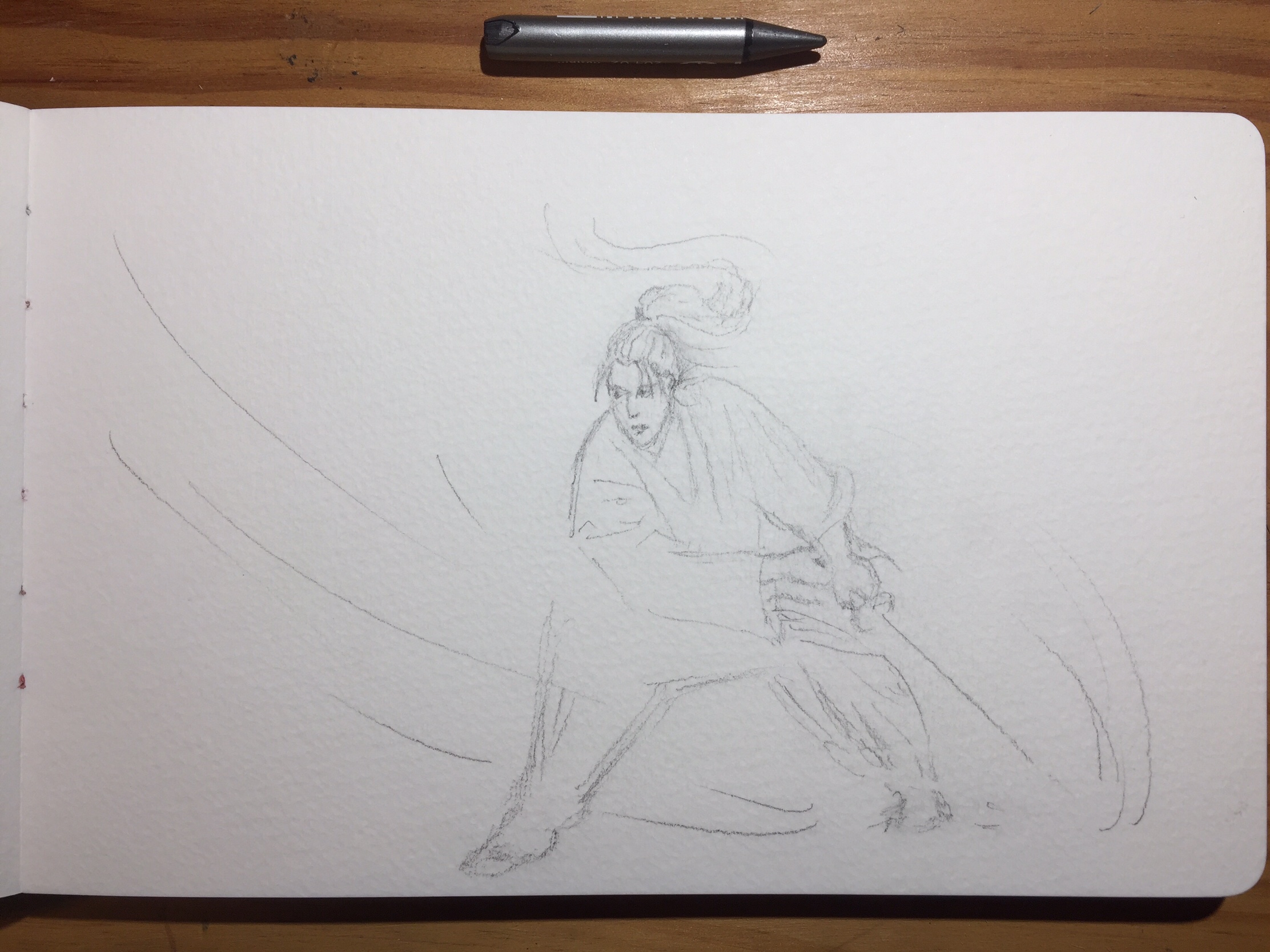
I used a Pentel brushpen for the black strokes and cold grey Faber-Castell brushpens for the rest:
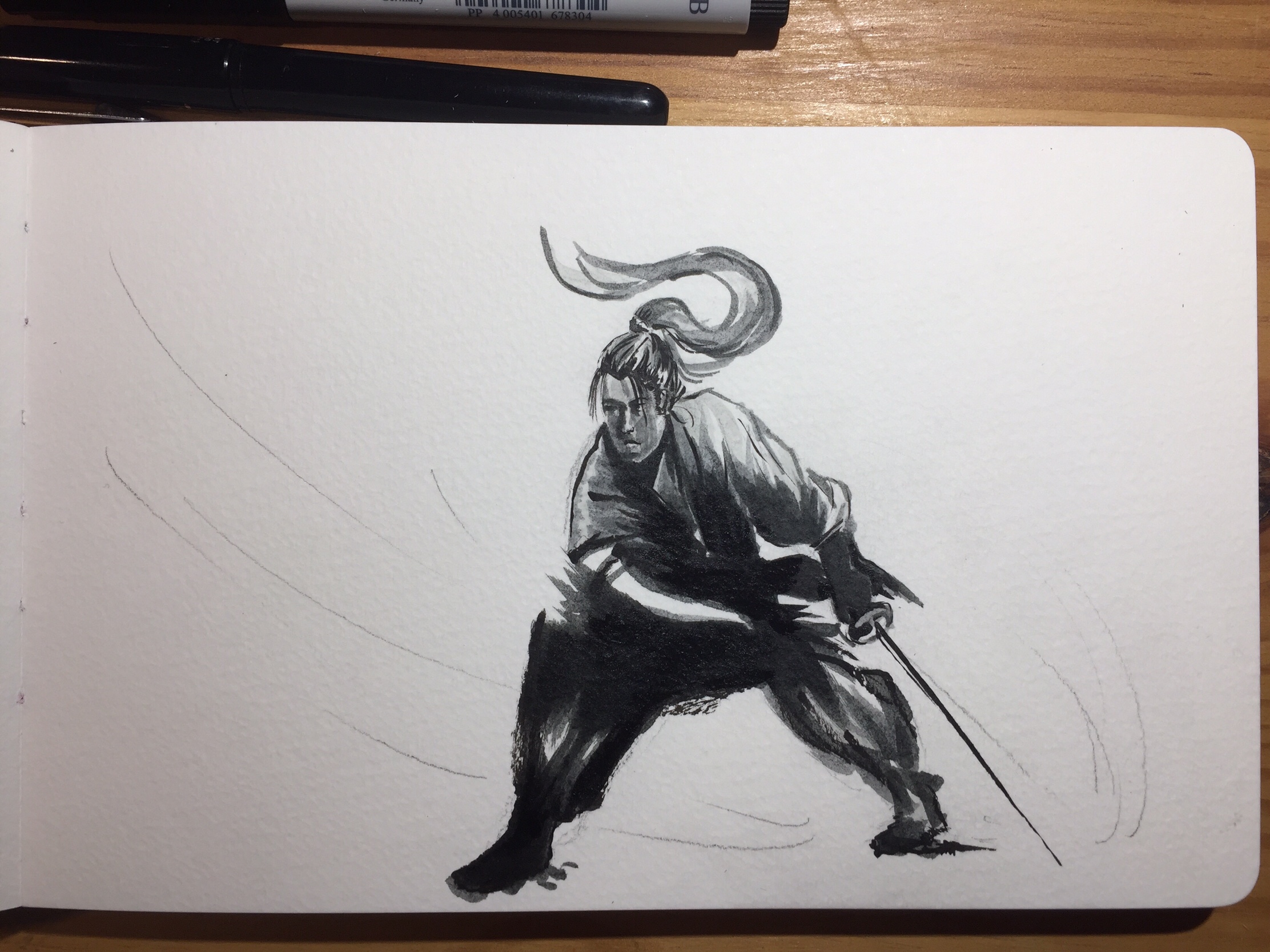
Then I erased the pencil marks, cut diagonally one of my cheap brushes, prepared a lamp black wash, took a deep breath and stroke:
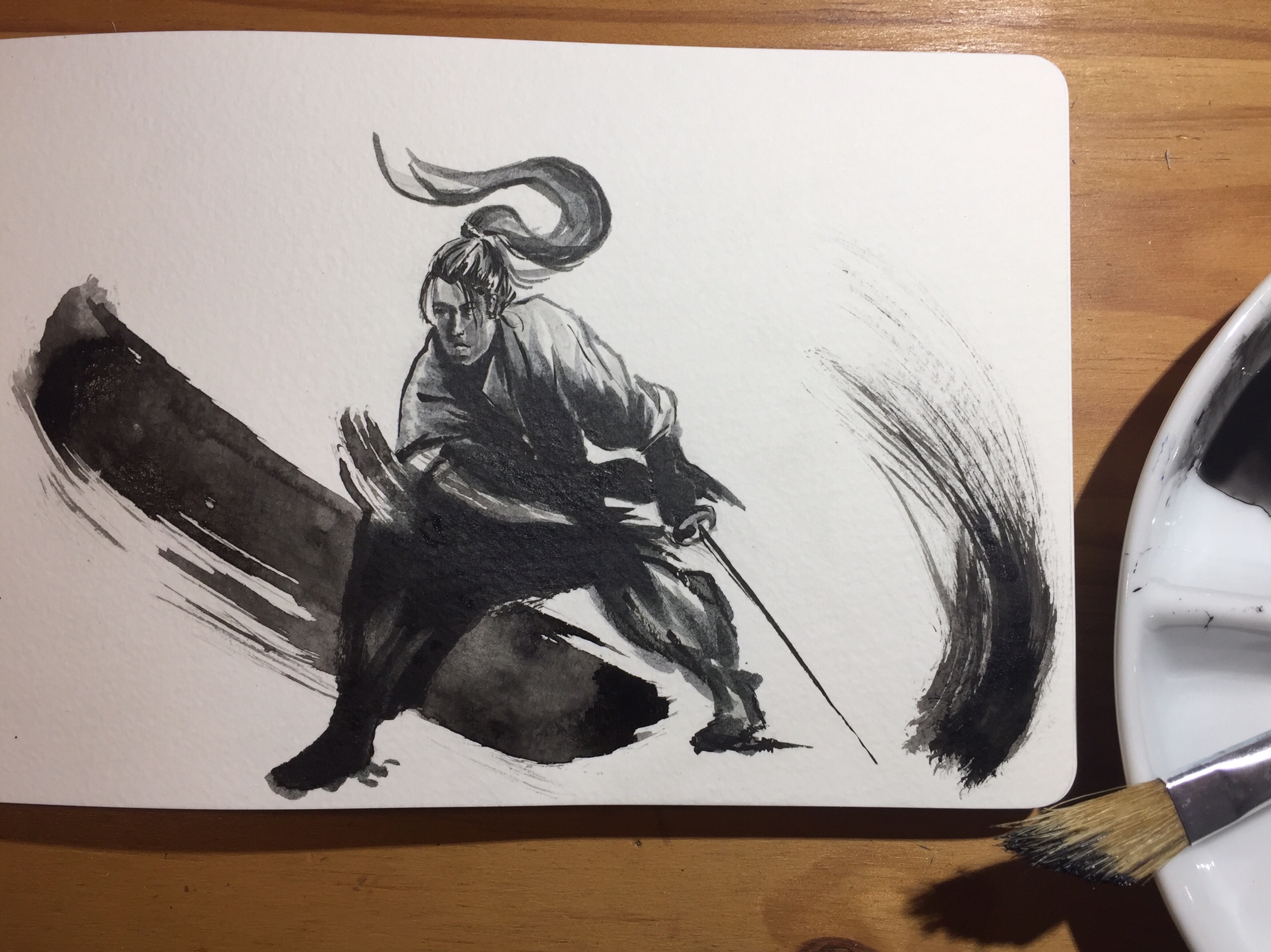
Reproduction of Moebius’ ‘Le garage hermétique de Jerry Cornelius’
I discovered Moebius rather recently. Stéphane raved about him, Virginie was a fan. So when she suggested we all meet in Toulon at the occasion of an exhibit of Moebius’ work, it was a done deal. I was fascinated. All these intricate and thin lines giving life to surrealistic worlds, people and creatures!
From one book, I asked Stéphane to choose a few images he liked and this page was my favourite. ‘Le garage hermétique de Jerry Cornelius’:
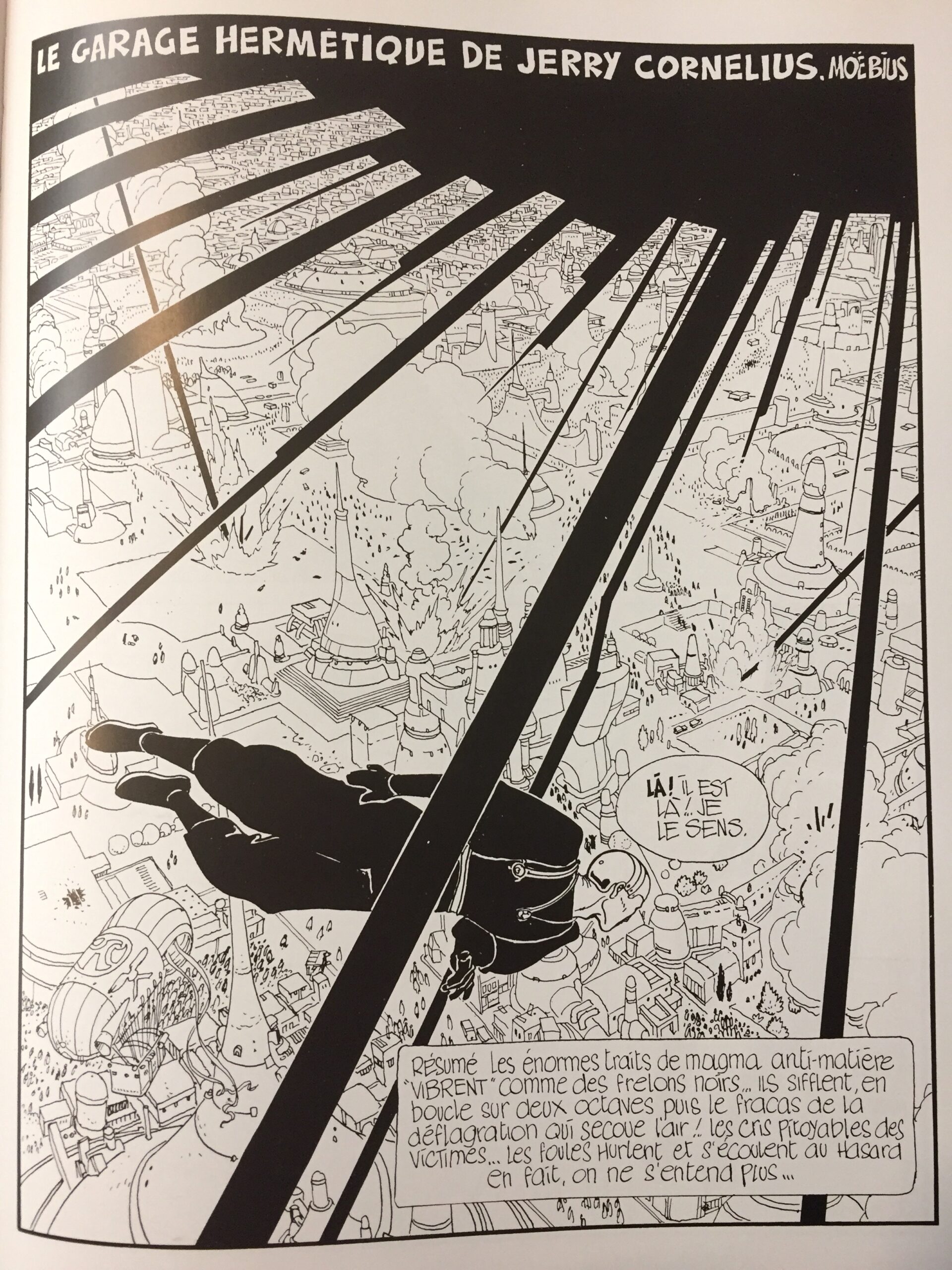
I sketched a rather precise version in pencil on an A4 white sheet:
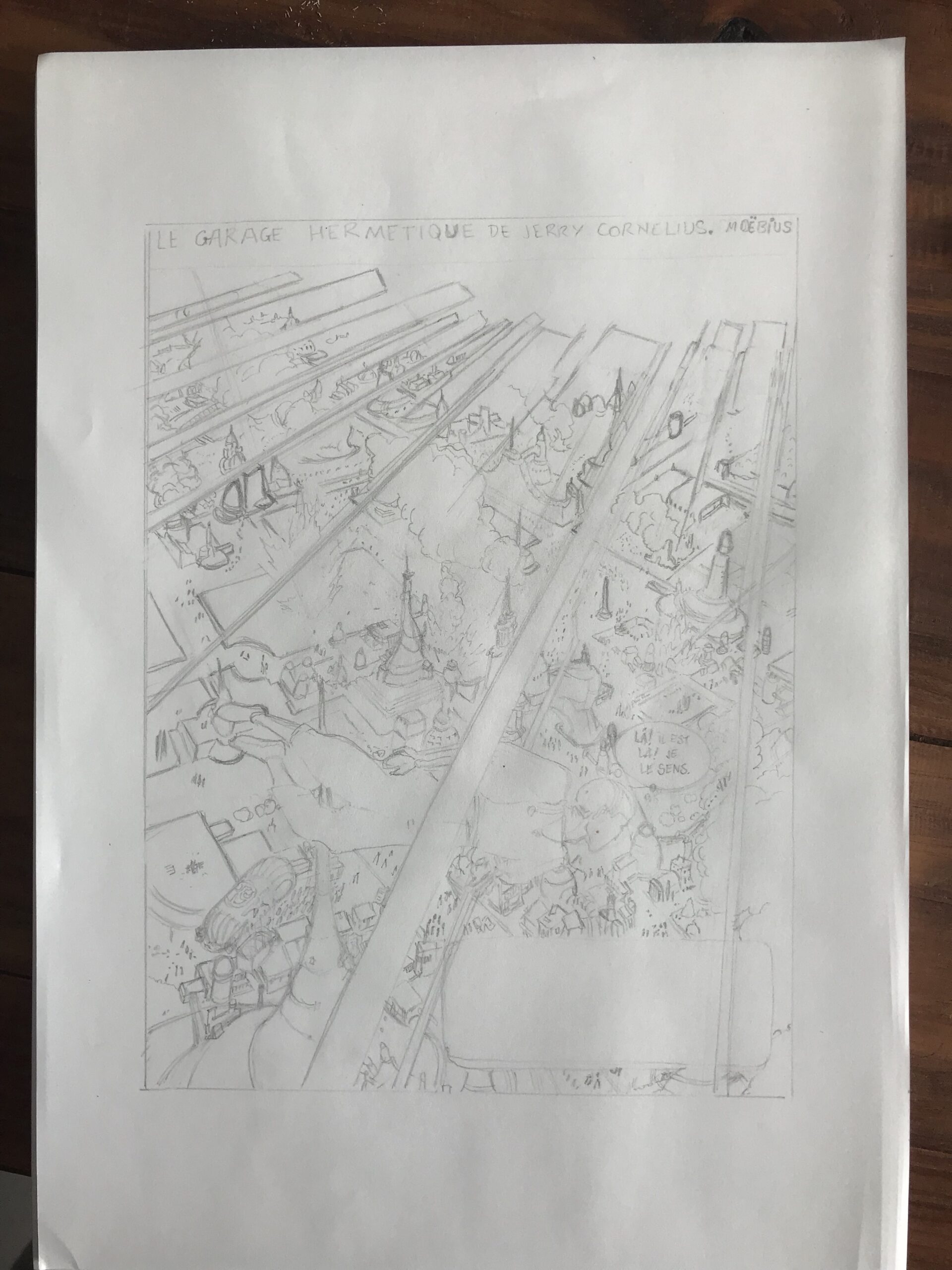
Using a Pentel Brushpen, I started inking the straight lines (and later the flying figure as well as the black area around the title at the top):
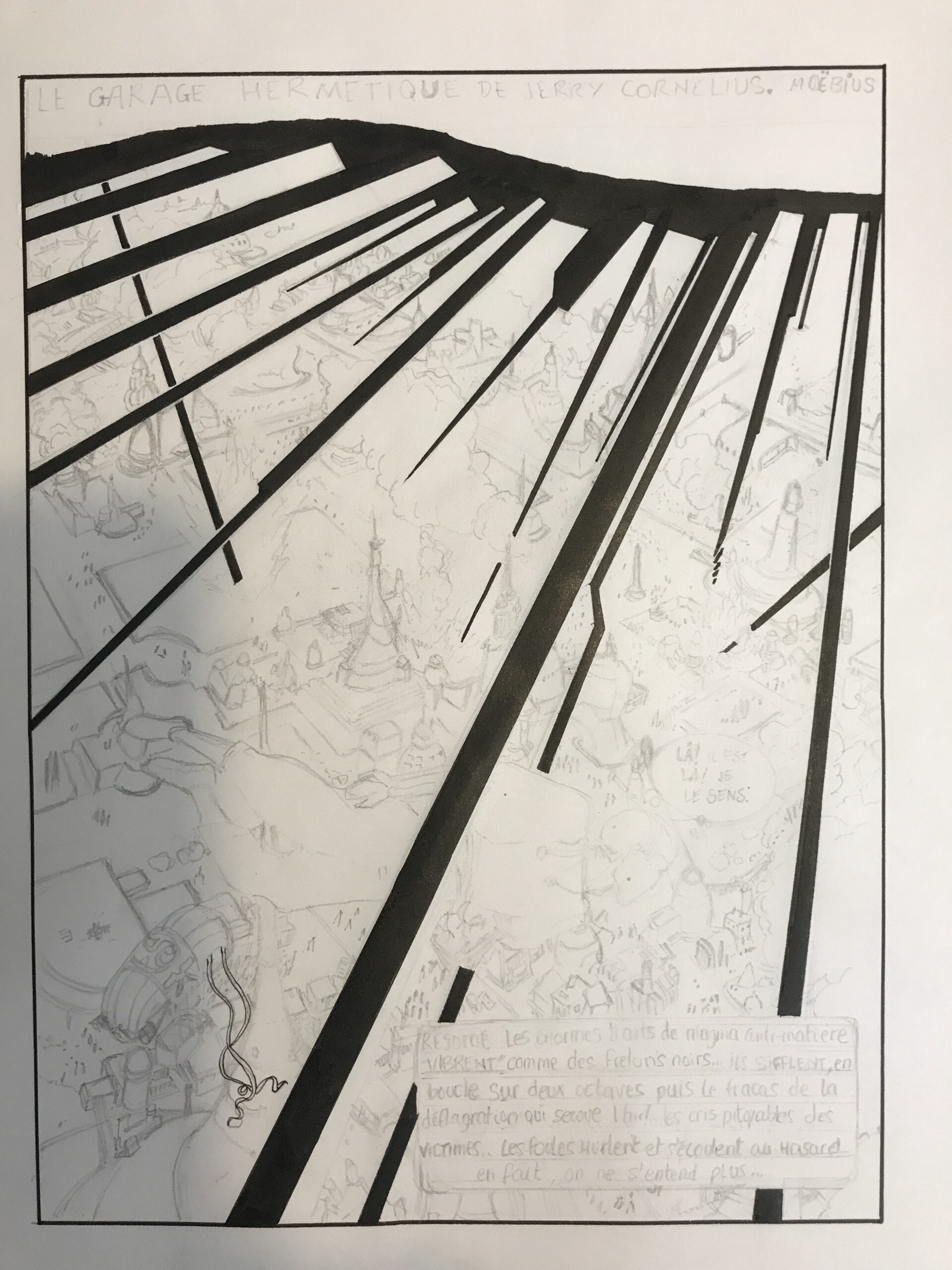
The rest of the outline I did with a 0.05 mm Uni-ball pin pen:
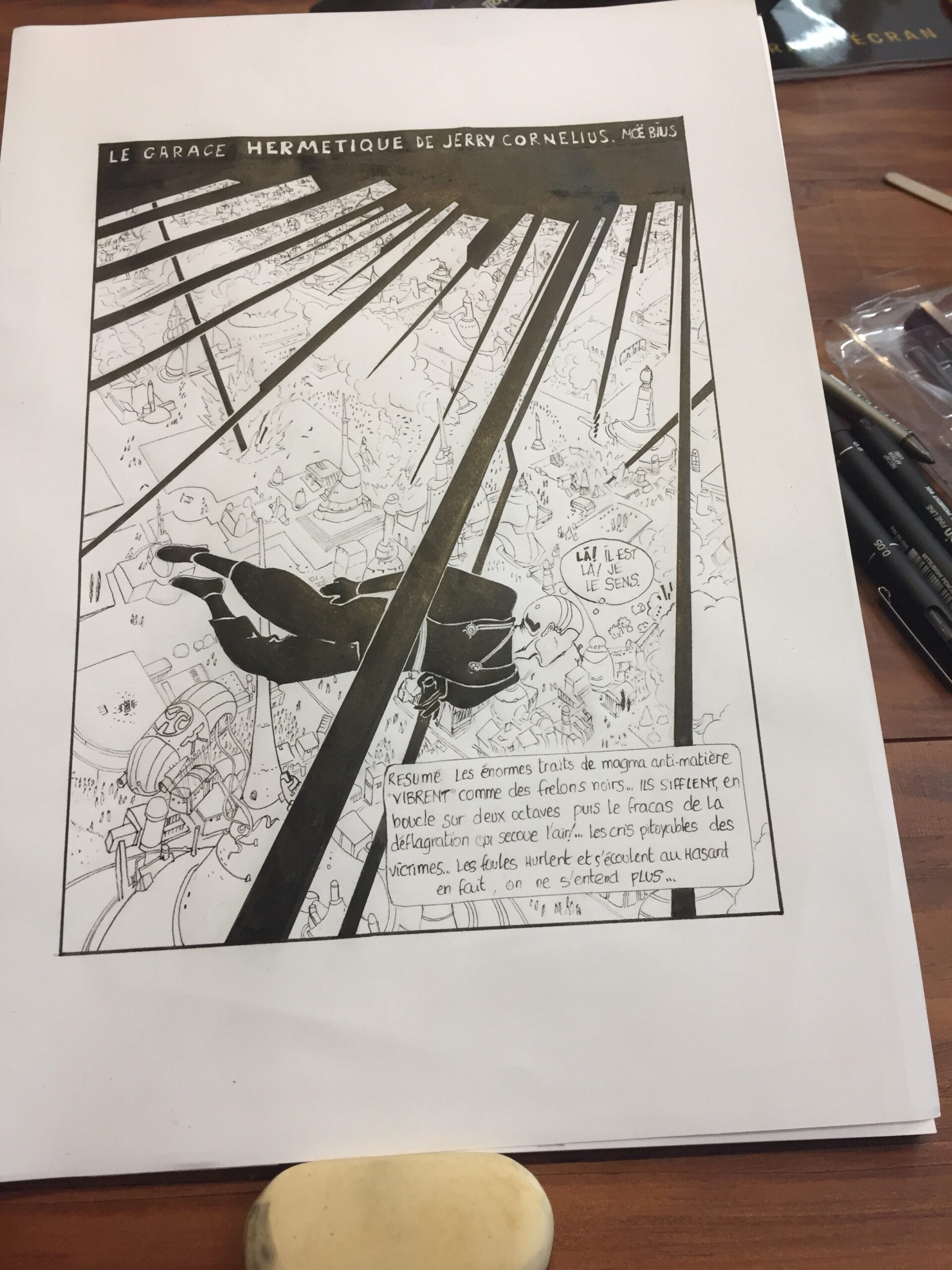
Tada! Gift ready and framed. The resulting drawing was 16×21 cm:
